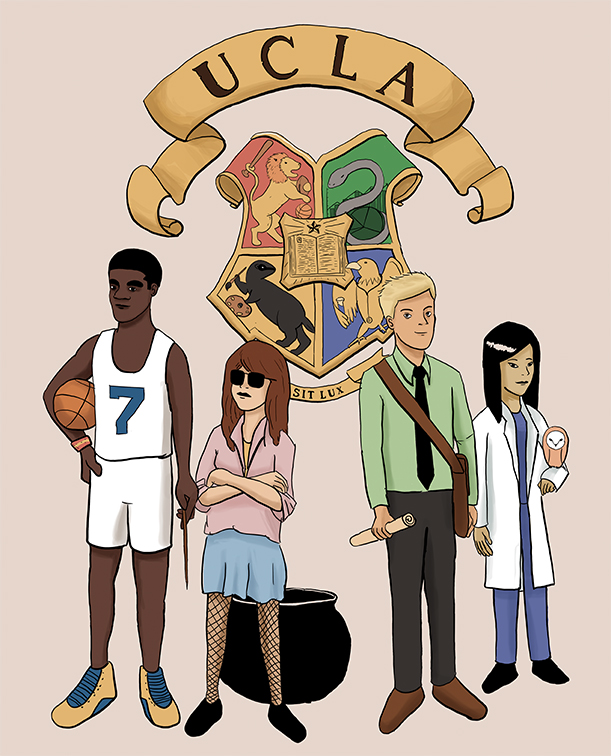The acceptance letters, more than seven years late for some, arrive via owl ““ an electronic one, that is.
With just a swish and click of a mouse, Muggles have been enrolling by the hundreds of thousands at Hogwarts School of Witchcraft and Wizardry through Pottermore, a website created by J.K. Rowling to expand the Harry Potter universe.
The website has two main components: One allows members to interact with the Harry Potter novels chapter by chapter, and the other, the Pottermore Shop, is the exclusive home of the Harry Potter e-books.
The website, originally open to a limited number of users late last summer, opened to the public about two weeks ago.
Ryan Donahue, a first-year political science student, was ready to try on the Sorting Hat and take his place at the Hufflepuff table in the Great Hall when he logged onto Pottermore. Instead he found himself sorted into Slytherin ““ notorious, in the books, for being the house of the antagonists.
Donahue’s teammates on the UCLA Quidditch team described him as “needing a few days to get used to it.”
Donahue is one of more than 2 million people who are now registered for the website.
“(Harry Potter) was so much a part of my childhood that I think I wanted the validity of Rowling’s (sorting quiz),” said Alex Beaulieu, a first-year undeclared student. “I was able to say, “˜Yes, I am a Gryffindor, and the creator of this universe approves this.'”
The rest of the books in the series will be added in the future, according to a statement on the website.
Rasha Ahmed, a fourth-year physiological science student, has been reading Harry Potter since she was gifted the first book on her ninth birthday. Ahmed said she is most excited for facts that never made it into the actual series, which appear as hidden items that Pottermore users unlock by clicking on items and backgrounds.
Two of Ahmed’s favorite characters are Remus Lupin and Sirius Black, friends of Harry Potter’s father. She said she hopes to learn more about Harry’s parents’ generation. Rowling put a significant amount of time into developing her characters, but readers don’t see much of the backstory because they are limited to Harry’s perspective, Ahmed said.
As for the sorting process, she said she was sorted into Gryffindor, but she found the questions tough to interpret.
In order to buy a wand, users must take a personality test so they can find the right match.
Katelynn Kazane’s wand is dogwood with a phoenix feather core, 12 1/4 inches, unyielding. The wand process felt personalized and legitimate, the second-year microbiology, immunology and molecular genetics student, said ““ as did the sorting.
“All the houses get this really cool, huge letter with the history of the houses and the common rooms,” she said. “I wish we had gotten more for Gryffindor.”
After getting sorted, students can also participate in duels and potion brewing to earn house points.
When the Hedrick Summit resident assistants have free time, those in different houses like to compete against each other, said Reza Hessabi, a fourth-year neuroscience student and Hedrick Summit RA.
“The first couple of nights, we would not stop,” Hessabi said. “None of us knew how to do it, and our spells were really lame for the first hour.”
For some, such as Hessabi, Pottermore is a chance to stay connected with the Harry Potter universe. For others, such as Donahue, it is mostly just a sorting process.
“For me, life after Harry Potter happened when I finished the last book,” Donahue said.
He said he felt a little weird after the end of the final movie, but he added that the series is something fans move on from and look back at fondly.
“(Pottermore is) like when somebody posts a clip from an old cartoon you used to like,” Donahue said, “It’s a reminder of everything that was there.”
